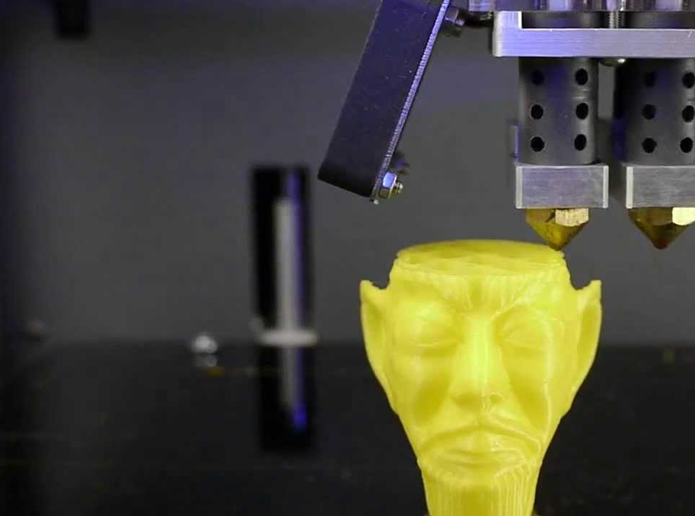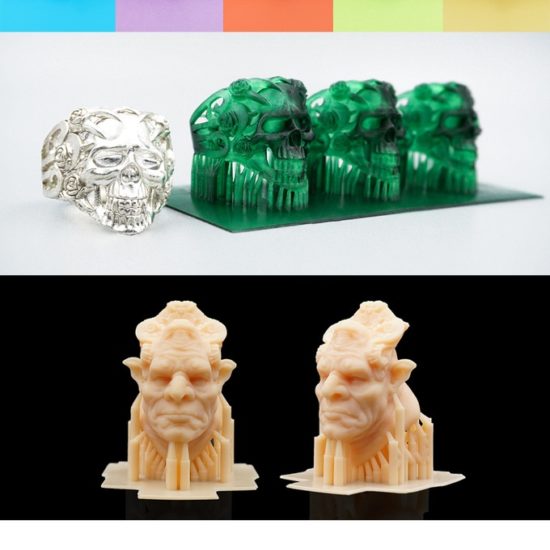3D printing pva filament
Ultimate Materials Guide - Tips for 3D Printing with PVA
Overview
PVA, or Polyvinyl Alcohol, is a soft and biodegradable polymer that is highly sensitive to moisture. When exposed to water, PVA will actually dissolve, which makes it a very useful support structure material for 3D printing. When printing extremely complex shapes or ones with partially enclosed cavities, PVA supports can be used and easily removed by dissolving in warm water. Standard supports may have been difficult to print or remove in these situations. PVA can also be used as a model material if there is a need to make quick prototypes.
- Great water dissolvable support material
- No special solvents required
- No additional hardware required
- Moisture sensitive
- Airtight storage containers required
- Greater chances of clogging if the nozzle is left hot when not extruding
- Expensive
Hardware Requirements
Before 3D printing with PVA make sure your 3D printer meets the hardware requirements listed below to ensure the best print quality.
Bed
Temperature: 45-60 °C
Heated Bed Optional
Enclosure Not Required
Build Surface
PEI
Painter’s Tape
Extruder
Temperature: 185-200 °C
No special hotend required
Cooling
Part Cooling Fan Required
Best Practices
These tips will help you reduce the chances of common 3D printing issues associated with PVA such as absorbing moisture, warping, and fumes.
Take Precautions for Filament Storage
Since PVA is highly reactive to water, storing the filament in a moisture-free container is mandatory. PVA that has absorbed water from the air will tend to bubble and crack during printing, which will ruin the quality and strength of the finished part. When you are done with the PVA spools, be sure to remove them from your printer and place them in air-tight containers along with a desiccant to remove any moisture from the container. If your filament has already absorbed too much moisture, the filament can be dried using a commercial dehydrator, or an oven set to the lowest possible temperature for a few hours.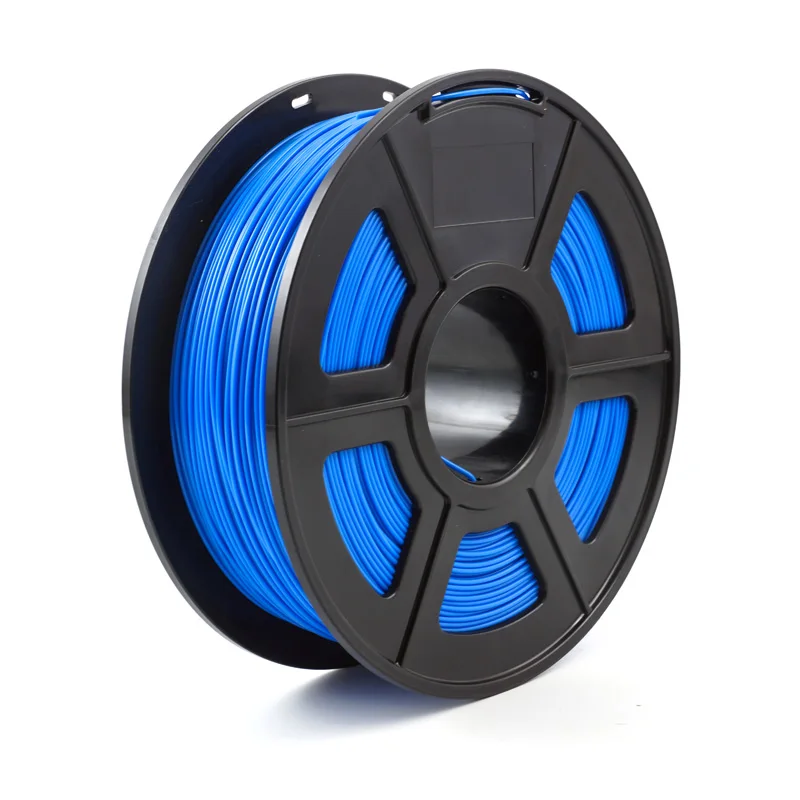 This will draw the water out of the filament without melting it, allowing it to print smoothly and without bubbles.
This will draw the water out of the filament without melting it, allowing it to print smoothly and without bubbles.
Use an Ooze Shield
When using PVA as a support material for your PLA prints, consider adding an ooze shield with at least two outlines. This will have the benefit of priming the PVA extruder after every tool change, which will ensure this extruder is ready to print at the start of the layer. Additionally, the ooze shield will catch any oozing from both nozzles to prevent these plastic deposits from reaching your part. Once the print is completed, the ooze shield can be removed and discarded. If you find the ooze shield is too weak or tends to separate easily, consider adding an additional ooze shield outline to thicken the protective shield.
Use Dense Support Layers
PVA can be rather expensive, so you want to minimize the amount of material that is used for your support structures. Simplify3D includes a useful feature called Dense Supports, which allows you to use the PVA material only at the interface layers between your part and the supports.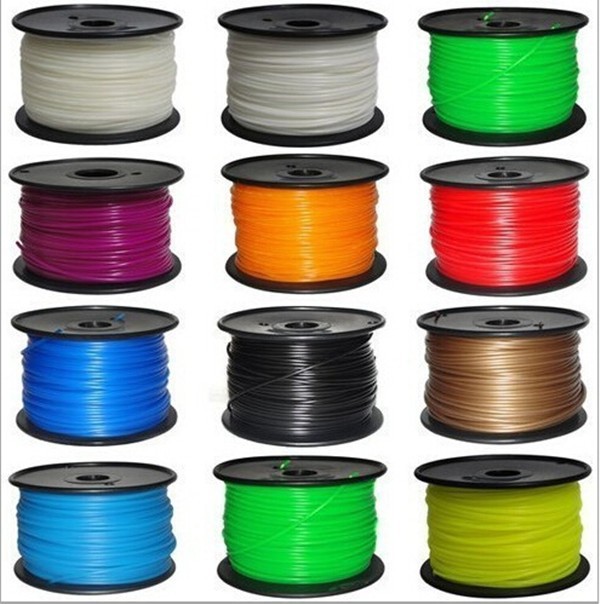 This can easily offer a PVA material savings of 90% or more, while still allowing the supports to easily be dissolved and separated from the part. The dense supports also create a nearly solid interface layer, which improves the surface quality on the underside of your print. If you have never used this feature before, there is a great video explaining the process, which can be found here: How to Use Dense Supports.
This can easily offer a PVA material savings of 90% or more, while still allowing the supports to easily be dissolved and separated from the part. The dense supports also create a nearly solid interface layer, which improves the surface quality on the underside of your print. If you have never used this feature before, there is a great video explaining the process, which can be found here: How to Use Dense Supports.
Pro-Tips
- In multi-extruder setups, cooling down the PVA hotend during idle times can prevent oozing and clogging
- Set the support upper separation distance to zero layers for a better surface finish. The PVA will be dissolved away, so it doesn’t matter if it bonds to the part while printing. This same technique can be used for your PVA rafts.
Get Started with PVA
Now that you understand the basics of printing with PVA, you are ready to try your first print! We’ve put together some sample project ideas and even a list of popular filament brands to help you get started.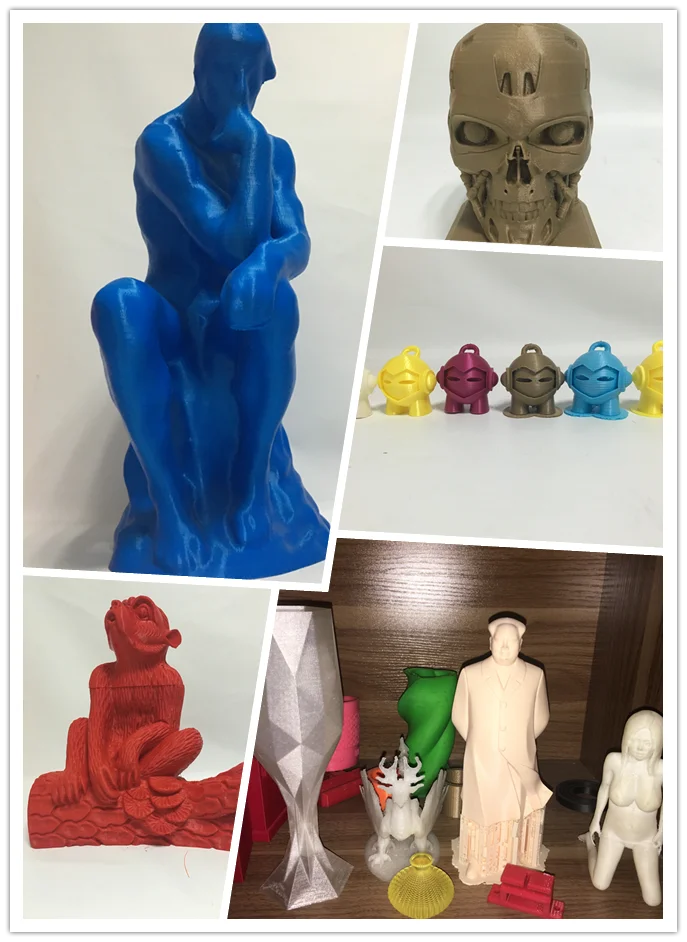
Common Applications
- Removable supports or rafts
- Dissolvable/Disintegratable applications
- Decorative parts
Sample Projects
- Hilbert cube
- Spring
- Parrot Pendant
Popular Brands
- Ultimaker PVA
- Matterhackers PVA
- eSun PVA
- HobbyKing PVA
PVA: All You Need to Know for 3D Printing
Published on June 6, 2022 by Madeleine P.
PVA, or polyvinyl alcohol, is a material widely used in the 3D printing industry due to its ability to dissolve in water. In particular, it is used for the creation of print supports when using FDM dual extruder machines. This offers users greater design freedom for parts with complex geometries, without affecting print quality. The more details and cantilevered parts the design has, the more supports the part will require in order to be manufactured. This guide will help you better understand the properties of this material, as well as its role in 3D printing in obtaining the best results in each manufacturing process.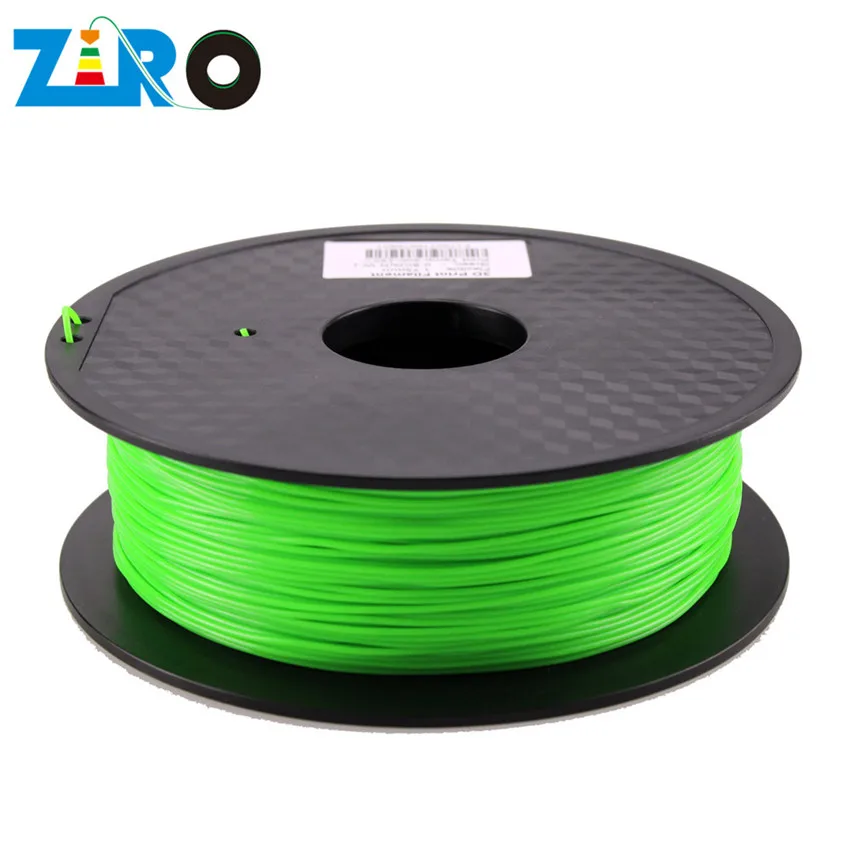
Characteristics of PVA in 3D Printing
On a technical level, PVA is part of the synthetic polymer family, with the particularity that it is biodegradable. It is created by polymerizing vinyl acetate, which is then hydrolyzed to obtain the material in filament form for 3D printing. It has a transparent to off-white appearance and is highly resistant to oil and grease. In addition to having very good adhesive properties similar to other thermoplastics such as PLA, CPE or Nylon, this material has a high tensile strength and flexibility. In order to obtain good substrate results, PVA requires preheating the printing tray to between 45 – 60ºC and bringing the extruder to a temperature of between 180 – 200ºC. It is also odorless, non-toxic and, as mentioned, biodegradable, making it safe for humans, animals and the environment.
PVA is a soluble material used as printing support (photo credits: Ultimaker)
Among its main advantages is, as mentioned, its ability to dissolve.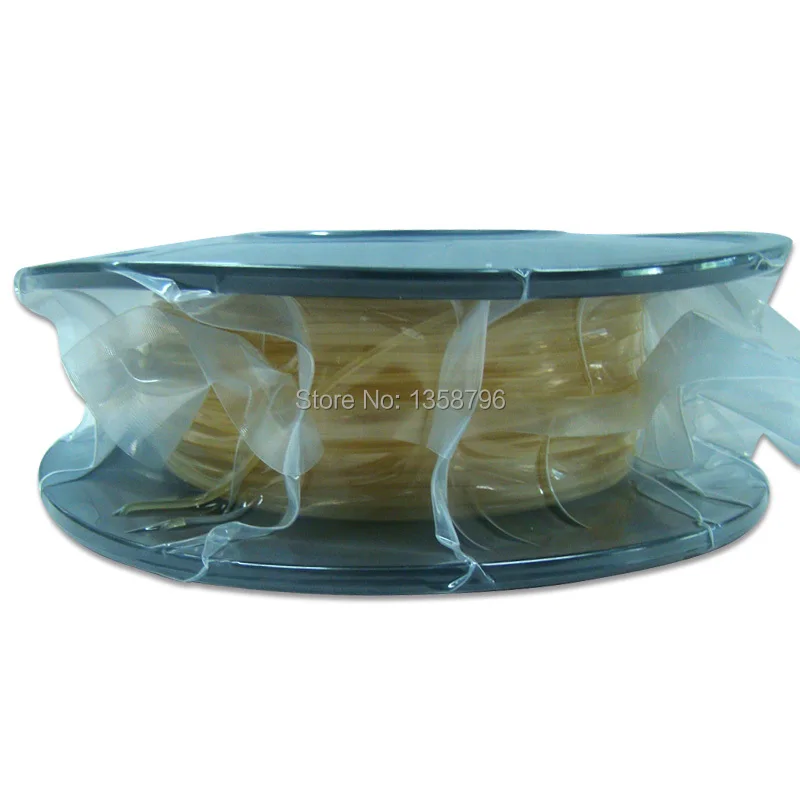 Linked to this, the most remarkable thing is that it only needs water to remove the support material, i.e., it does not require solvents with more complex components. Furthermore, it does not require any additional hardware. However, it is also worth mentioning some of the disadvantages of PVA, though they are generally applicable to other soluble materials. One of these is the high sensitivity to moisture, which can directly affect the material. In order for its properties not to be altered, it will be necessary to keep it in areas where the air is highly controlled. PVA is also more likely to generate clogging if the nozzle is left hot when not extruding. To this can be added that many users consider it to be an expensive filament for what it is, as it ultimately is not used in the final parts being printed, but rather dissolves in post-processing.
Linked to this, the most remarkable thing is that it only needs water to remove the support material, i.e., it does not require solvents with more complex components. Furthermore, it does not require any additional hardware. However, it is also worth mentioning some of the disadvantages of PVA, though they are generally applicable to other soluble materials. One of these is the high sensitivity to moisture, which can directly affect the material. In order for its properties not to be altered, it will be necessary to keep it in areas where the air is highly controlled. PVA is also more likely to generate clogging if the nozzle is left hot when not extruding. To this can be added that many users consider it to be an expensive filament for what it is, as it ultimately is not used in the final parts being printed, but rather dissolves in post-processing.
Use and Applications
As a soluble material, PVA is ideal as a complement in the manufacture of parts with complex geometries, as well as internal cavities, conceptual models and molds.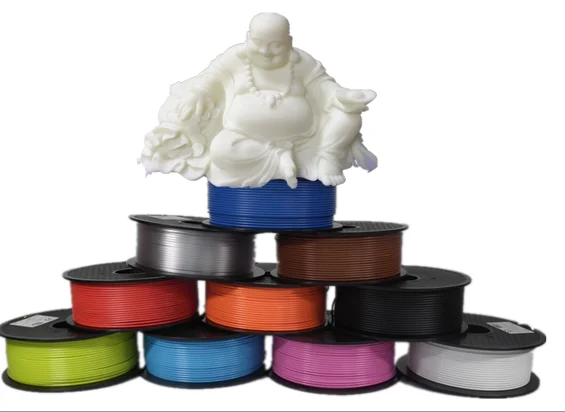 3D printed supports offer improved surface quality and also allow the part to be oriented to optimize its mechanical properties. An important point to consider when working with this material is the configuration of the extruders. Cooling the PVA hotend while idle will prevent the oozing and clogging mentioned above. In addition, it is recommended to set the top support clearance distance to 0 layers for a more optimal surface finish. Since the supports will dissolve, it does not matter if they adhere to the final part during the fabrication process.
3D printed supports offer improved surface quality and also allow the part to be oriented to optimize its mechanical properties. An important point to consider when working with this material is the configuration of the extruders. Cooling the PVA hotend while idle will prevent the oozing and clogging mentioned above. In addition, it is recommended to set the top support clearance distance to 0 layers for a more optimal surface finish. Since the supports will dissolve, it does not matter if they adhere to the final part during the fabrication process.
By allowing 3D printing of all types of parts, no matter how complex the design, PVA is a material widely used in the art world to create decorative models. However, it is not the only sector that is taking advantage of this filament. Even the most advanced industries that work with FDM technology to create tooling or prototypes are also increasingly integrating the soluble materials to create supports.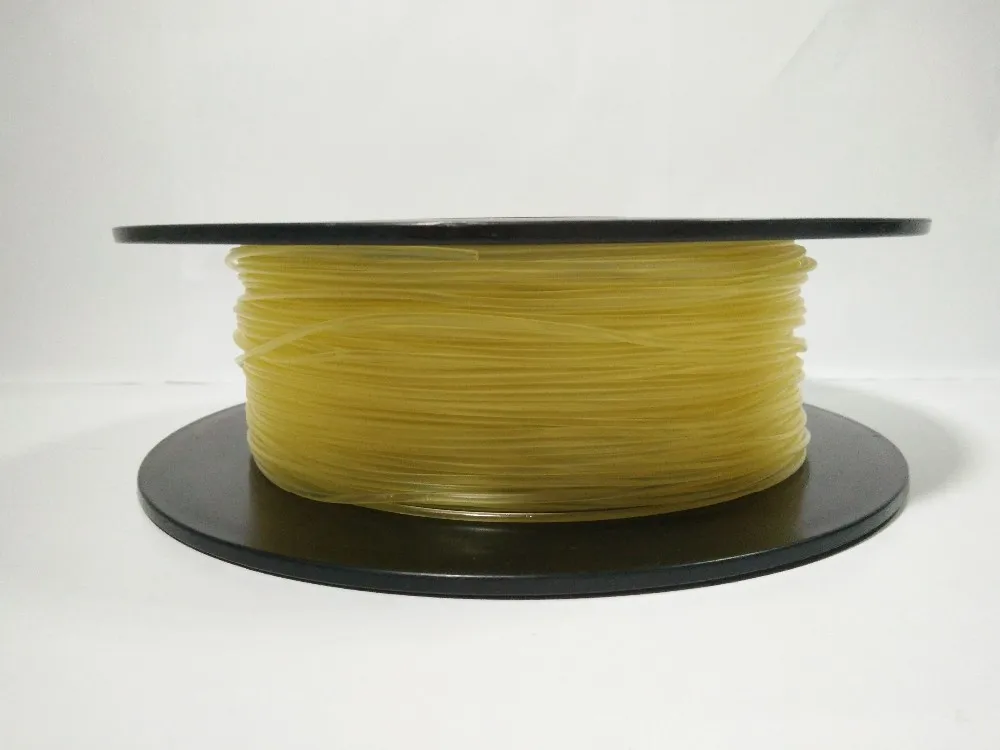 Among the companies offering PVA filaments we can find Ultimaker, eSun, MatterHackers or Polymaker, among many others. If you want to learn more about other 3D printing filaments, you can consult our guide HERE.
Among the companies offering PVA filaments we can find Ultimaker, eSun, MatterHackers or Polymaker, among many others. If you want to learn more about other 3D printing filaments, you can consult our guide HERE.
What do you think of the characteristics of PVA in 3D printing? Let us know in a comment below or on our Linkedin, Facebook, and Twitter pages! Don’t forget to sign up for our free weekly Newsletter here, the latest 3D printing news straight to your inbox! You can also find all our videos on our YouTube channel.
*Cover Photo Credits: Zortrax
Using Dissolvable Filament to Create Supports
Using Dissolvable 3D Printing Filament is an easy and effective way to create support structures for your 3D printed part. In this article, we'll take a look at the different types of dissolvable filaments on offer, the benefits of using them over insoluble filaments, and tips and tricks for the smoothest possible printing process.
FDM 3D printing is a manufacturing technology that allows you to create parts with complex geometries that are usually impossible to obtain using traditional methods.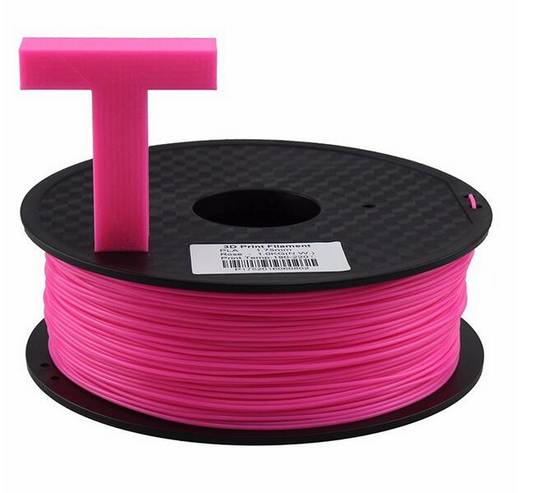 However, when using this technology, each layer of the part requires supports, either on the structure of the part itself or on an additional supporting structure.
However, when using this technology, each layer of the part requires supports, either on the structure of the part itself or on an additional supporting structure.
With a single extruder 3D printer, you are limited to using the base material of the printed part to create the support structure. Things are different with dual-extruder printers, since dissolvable filaments can be used to create support structures.
Soluble 3D Printing Filament Types
Water Soluble 3D Printing Filaments
Such materials are known for their solubility in ordinary water without any aggregates. This makes them an excellent option, as their dissolution does not pose any danger, and also does not cause any reaction to the base material of the product.
One of these materials is PVA, which is the most commonly used support material in 3D printing. BVOH is another widely used material with better material compatibility than PVA as well as faster dissolution time.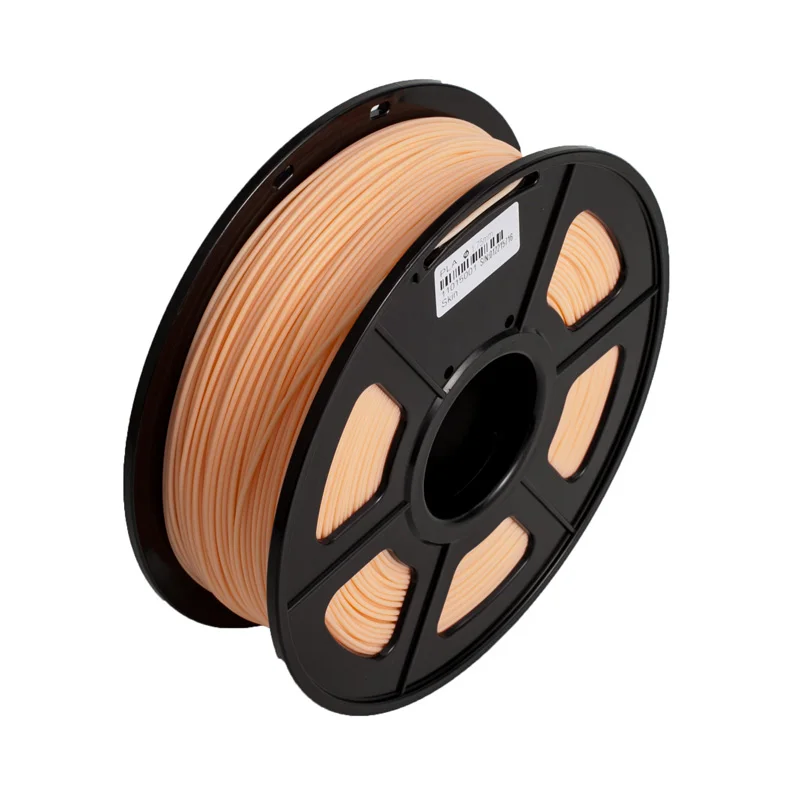
Water Soluble Chemical 3D Printer Filaments
Some industrial grade materials are not compatible with filaments such as PVA or BVO due to their chemical properties and/or heat resistance. For this reason, materials like BVOH or PVA have been designed with additional properties to make them compatible with high temperature materials such as PEEK, PEKK, PPSU, PP and others.
In order to dissolve these supports, the pH of the water must be acidic in order to break down the sugar that this type of material normally contains, as this is less dangerous than the use of solvents.
Soluble 3D Printer Filaments with Organic Solvents
These are the least used materials due to the difficulty of using organic solvents with polymers most used in 3D printing as the solvent can react with the print material and damage it.
The advantage of using these materials is their high compatibility with the construction material. The most common example is HIPS as a support material for ABS.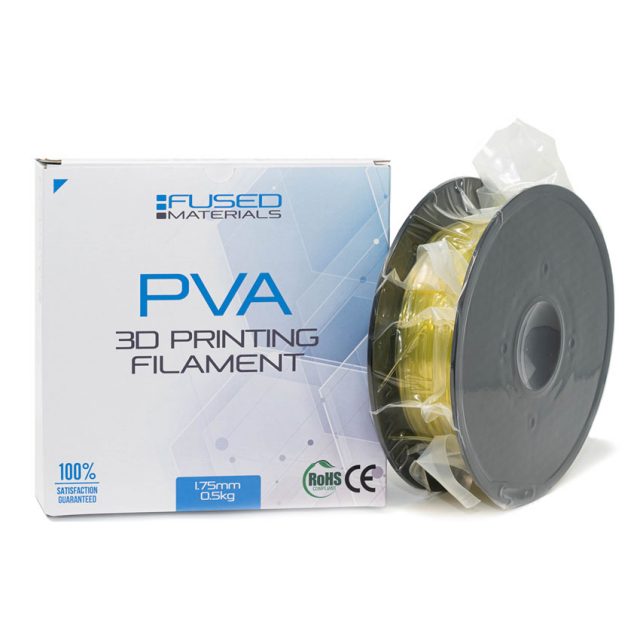
Insoluble and dissolvable filaments for 3D printers
Soluble filaments for support structures have advantages and disadvantages compared to using insoluble filaments:
- Easy to remove supports
- Since the supports are soluble, simply dip the model in the appropriate solvent and wait until the supports are gone. This is very useful for parts with a very complex structure.
- Improved contact surface quality
- This advantage is related to the first point; since the material is easily removed, a strong base can be created in the area where supports are required, resulting in a smooth surface without filament residue.
- Less need for post-processing of the model
- The ability to print complex 3D models with high surface quality using dissolvable filaments also reduces the need for post-processing tasks such as polishing, sanding, gluing, etc.
- Longer print times in increasing the time of 3D printing, since materials need to be changed in the process.
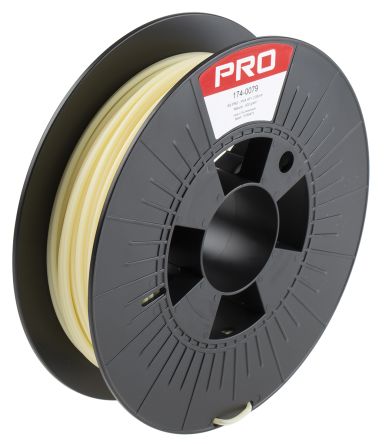 However, there are techniques for optimizing the support structure to reduce this problem.
However, there are techniques for optimizing the support structure to reduce this problem.
Tips for creating support structures with dissolvable filaments
By changing some settings in your slicer, you can get solid supports to improve the quality of your 3D model.
Strengthening the Supports
It is quite common to create thin supports for very thin parts of a model, however they are not strong and tend to break during the printing process. To increase their durability, you can adjust the following support configuration options:
Horizontal Support Extension: Increases the overall thickness of the support, allowing the tower to be thicker and stronger.
Avoid breakage of supports during printing
The thickness of supports is equal to the diameter of the hot end, so they are usually quite fragile and can break during printing. By changing the pattern and other parameters, the strength can be increased:
- Support pattern: Patterns such as grid and triangle are quite resistant to tearing during printing.
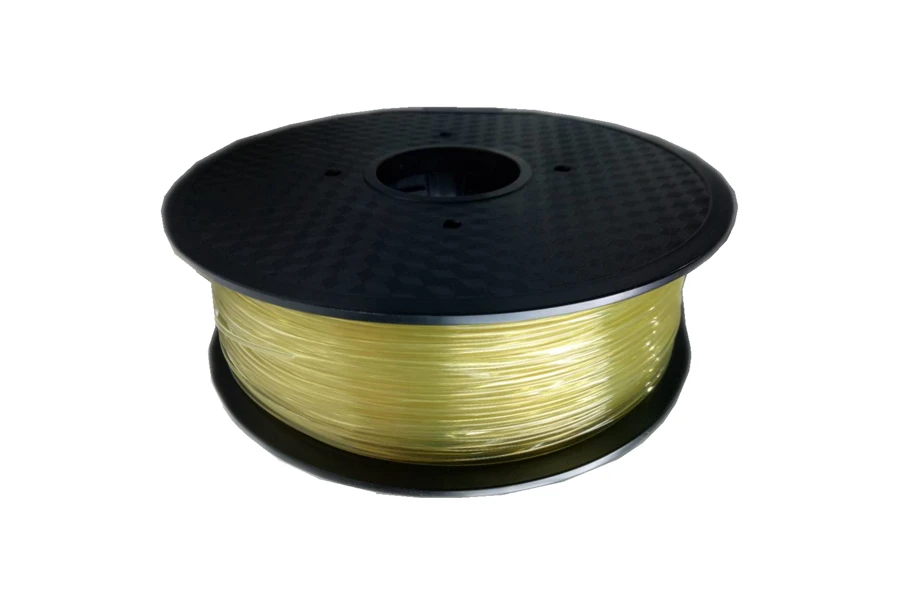 It is recommended to print such patterns only on soluble material, as they are quite difficult to remove.
It is recommended to print such patterns only on soluble material, as they are quite difficult to remove. - Supports printing speed: If the supports are printed too fast, there is a risk of breaking the structure. Reducing the speed avoids vibration or damage to the structure as the head passes.
Improving the quality of the surface of the model
The quality of the contact surface depends on the distance Z from the support pattern, the direction of the upper and lower perimeter lines and the amount of material holding the base of the model. Changing these parameters can improve the quality of the surface, but will complicate the process of extracting supports.
- Density of supports: The higher the density, the better the model will hold and therefore the surface finish will improve.
- Top/Bottom Line Direction: Changing the direction of the perimeter pattern helps hold the bottom layer of the model, as it allows the support and the perimeter pattern to intersect better.
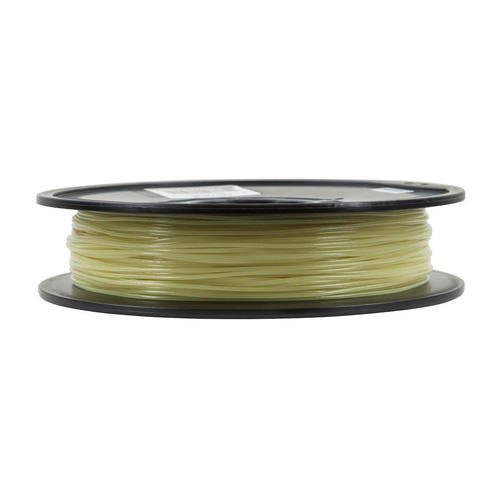
- Support Pattern and Top/Bottom Pattern: The support and perimeter patterns affect how the support model attaches, ideally the patterns should overlap as often as possible to better secure the first layer.
Always remember that it is important to keep filaments in a dry environment, as soluble materials readily absorb moisture and can cause printing problems. Materials such as PVA and BVOH can be dissolved in normal water. This water can also be heated to shorten the removal time of supports.
We hope you follow our advice and recommendations to improve the surface quality of your 3D printed parts and make the process faster and more efficient.
We will keep you updated with the latest news!
Your iGo3D Russia team
Our groups in social networks:
VKontakte
Telegram
YouTube
PVA plastic for printing
Polyvinyl alcohol or "PVA plastic" is a unique consumable that greatly expands the possibilities of 3D printing when using printers with a dual extruder.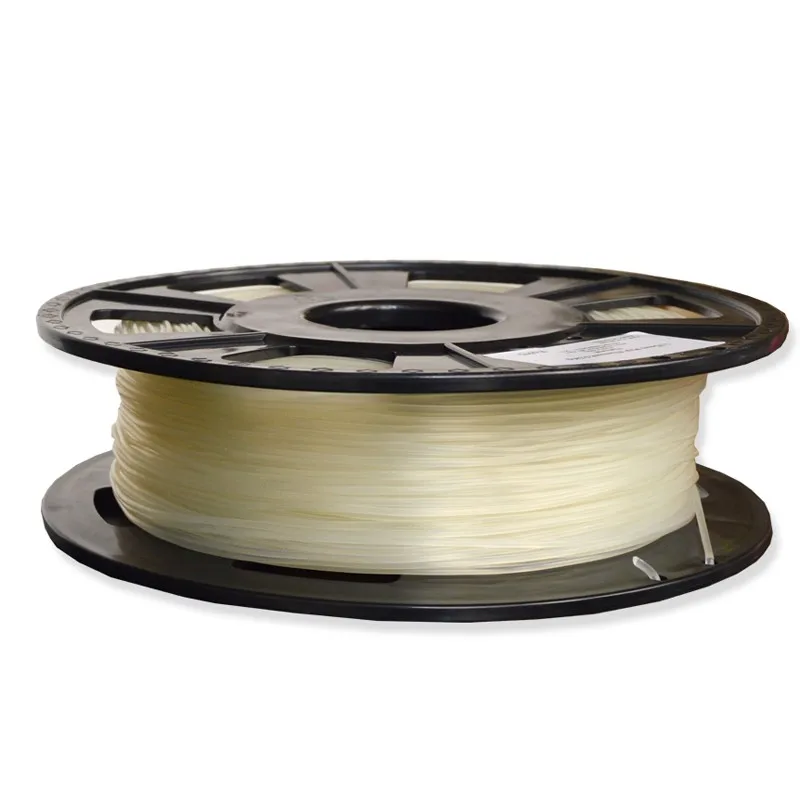 PVA is soluble in water, which makes it completely unsuitable for creating durable products, but allows it to be used as a support material when printing models of complex geometric shapes.
PVA is soluble in water, which makes it completely unsuitable for creating durable products, but allows it to be used as a support material when printing models of complex geometric shapes.
An example of using temporary supports. Removing such elements manually
is time consuming and can degrade the quality of the finished model
One of the limitations of 3D printing is the inability to "print in the air", which makes it difficult to create attachments. Technologies such as selective laser sintering (SLS) solve this problem by using powdered materials distributed over the entire area of the working chamber - the unused material of one layer serves as support for the elements of the next layer.
In the case of FDM printing, the material itself is applied selectively. Accordingly, hinged elements may not have sufficient support - it all depends on the angle of deviation and print resolution, but even with the optimal resolution, printing long horizontal elements (the so-called "bridges") is only possible at the expense of quality or impossible at all. In such cases, artificial temporary structures called "pillars" or "supports" are created to be removed when printing is complete.
In such cases, artificial temporary structures called "pillars" or "supports" are created to be removed when printing is complete.
Hilbert cube printed with ABS (grey) and PVA (white)
Unfortunately, the mechanical removal of such structures leaves marks on the finished model, which leads to the need for subsequent machining. In the worst case, the supports may even be out of reach of mechanical tools. The latter is possible when creating models with a complex open internal structure.
As an illustrative example, you can use the Hilbert cube. Building such a model with standard supports will turn into a nightmare when you try to remove them. Fortunately, owners of dual printhead FDM printers have a smarter option: printing a composite model with water-soluble plastic supports, that is, PVA.
In this case, the PVA serves as a void filler supporting the layers of ABS performance. The finished model will need to be kept in ordinary water until the PVA plastic is completely dissolved.
ABS/PVA Composite Water Cured
Curing time can be quite long, up to several hours. The period depends on the size of the model and the temperature of the water, but can be reduced by intermittent or constant stirring of the solution.
PVA plastic is supplied in standard spools of 1.75mm or 3mm thread. The recommended extrusion temperature is 160-175°C. Exceeding this temperature may lead to pyrolysis.
PVA is produced from various raw materials, including ethylene gas (released during the ripening of some fruits and vegetables), ethyl alcohol (the same, drinking) and petroleum products, but in any case, when prepared, it is non-toxic and does not pose a health hazard.
Being water-soluble, the material is hygroscopic (easily absorbs moisture), which should be taken into account when printing. We recommend drying the media before printing to avoid distortion or steam.
Finished Hilbert Cube without PVA filling
Drying can be done even in an ordinary oven: about six hours at 80°C should be sufficient for a stale coil.




